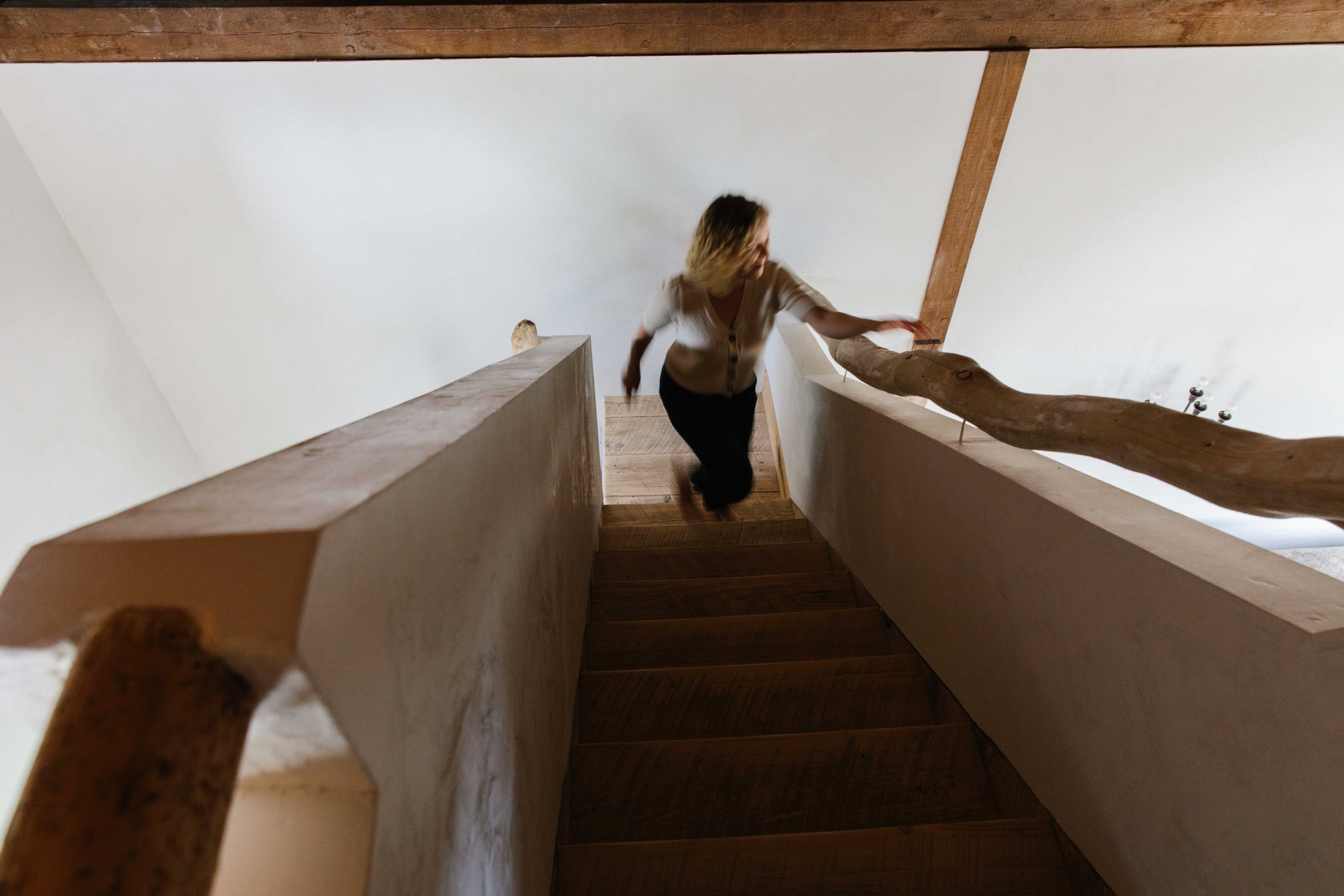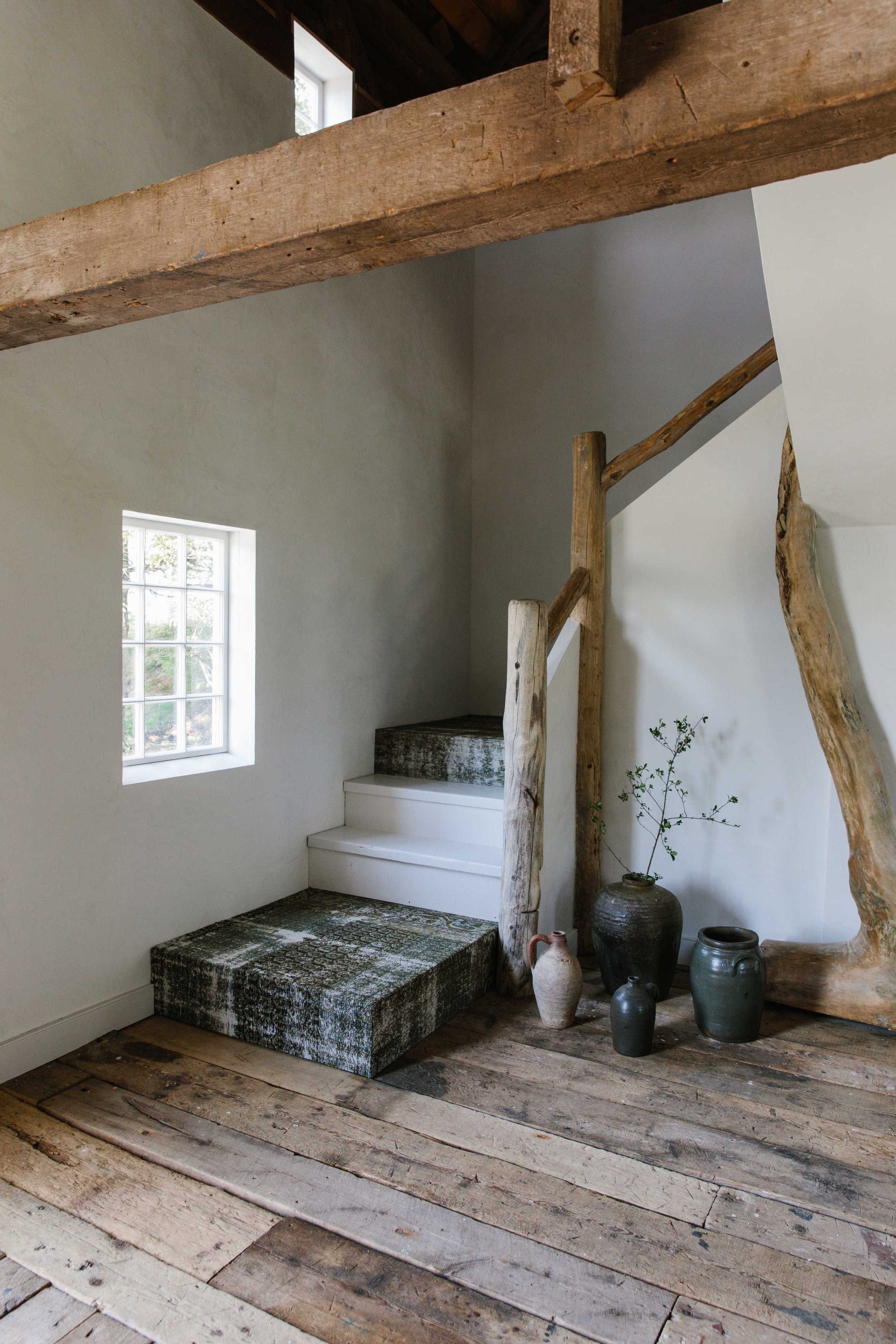Vendor Spotlight on…Master of Plaster
We love all our vendors and we’re so lucky to work with such talented and passionate people—so we thought we’d introduce you to some of the companies that we find ourselves sourcing from again and again. Frankly, we couldn’t have completed our Maine project without them! This week, meet Lauren of Master of Plaster, our go-to source for the most artistic plaster applications.
How did you and Blair meet?
We actually met through Instagram! Blair reached out to us, she’s a special designer because she’s genuinely interested in materials. She asked to get a sample set, loved the finishes and that was so exciting for us to hear. We just instantly clicked, with her genuine interest in materials and I have a background in design. Our personalities really melded well. She’s passionate, so am I. Then we did their Coasters’ Chance project!
Tell us a little bit about your business.
It’s a true family business. We are craftsman. My father owns Dillon Construction. He has a crew; and my brother runs the Charleston office. My sister is our company’s CFO. It was my dad who first started working with Michael Kempster, who was working throughout the East Coast restoring some of this country’s most ornate and complex plaster interiors. He developed his own unique formulation of lime plaster that was ready-made for other plasterers. Passed down for hundreds of years and improved upon with each succeeding generation, the MOP lines of plasters are truly one of a kind, exceptional materials with which to work. The firm moved from Mike’s original Essex, NY studio to the current manufacturing plant in Columbia, South Carolina when cancer took Mike’s life. My dad hated the idea of these formulations being lost with Mike’s passing and took over the company.
Do you guys do all of the applications?
I do travel and installs for certain clients. If a designer comes to us, we’ll recommend an applicator, but we have a lot of artistic DIYers. If we can share the knowledge and people are interested, we’re happy to provide tech support. We’re really helping the craft grow and the interest grow. Ultimately, we really want to foster an appreciation for the craft.
Can you give us a little history about plaster?
Plaster has always been a prevalent building material. But after WW2, when the soldiers came back, there was a big housing boom and plaster fell to the wayside when construction times were sped up. Then into the 1950’s-1980’s it was a lot quicker and cheaper to hang sheetrock. However, plaster has always been alive and well in the preservation world. After the bling of 90s and 2000’s we’re really seeing an appreciation for the organic process and evidence of the craftsman’s hand in the work. People now are working hard to know and understand how something gets made and the labor that went into it.
What makes designers gravitate to plaster?
People love that we’re an American made product. We try to let them have access to it, to experience it, especially designers. That’s their work and it’s personal, so there is a real level of trust. I work better when there’s a trust that’s developed. It’s all about relationship building!
Why should someone consider using plaster in their own home?
It’s an earthen material, so you’re bringing those outdoor elements indoors. We spend like ninety percent of our day inside, so we’ve become removed from outside world and this helps bring in organic elements. They’re very healthy materials and are all natural. Lime plaster won’t grow mold and bacteria, which is a real plus in a home. From an aesthetic standpoint, plaster reads light. It absorbs it in and reflects it out. Plaster feels alive, the light will read in or reflect off differently as you move through the space. It helps us engage with our spaces more. I’m a big proponent of the idea that intentional creation elevates people’s experiences. That care and attention to detail makes you appreciate the beauty of a space and encourages more beauty in your own space.
Can you clean plaster?
Since plaster is an earthen material, it’s porous, but if you want to use it in a place like a kitchen or bathroom, you’ll want to seal the plaster which creates a protective barrier. It still allows the plaster to breathe, but allows for spills too. Our plasters are hydrated lime putty, they’re soft so less prone to cracking and move as a structure settles.
What should people think about before deciding on plaster?
How hard it’s going to be on the wall (it’s great for longevity, but if it’s a space where you’re heavy on the those surfaces it’s something to consider). It’s also important to have an understanding of what they want to see happen in their space (high polish/sheen, less movement) it’s important to have a really clear-cut understanding with their applicator. Most true plasters are multi-coat applications, so they’re more involved and labor intensive. So, consider your timeframe before committing! We typically do a three-coat application, that’s an intense amount of time.
Images by Erin McGinn Photography

















The Roweam New Year’s Collection is a tribute to the art of celebration — those rare, shimmering moments when the year turns over and the home becomes the stage for gatherings, reflections, and joyious moments with loved ones. Centered around a curated ensemble of luminous glassware, art pieces, casegoods, and dining essentials, this collection captures the quiet glamour of welcoming a new chapter.